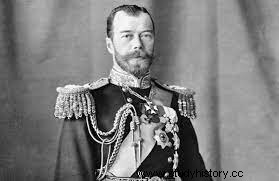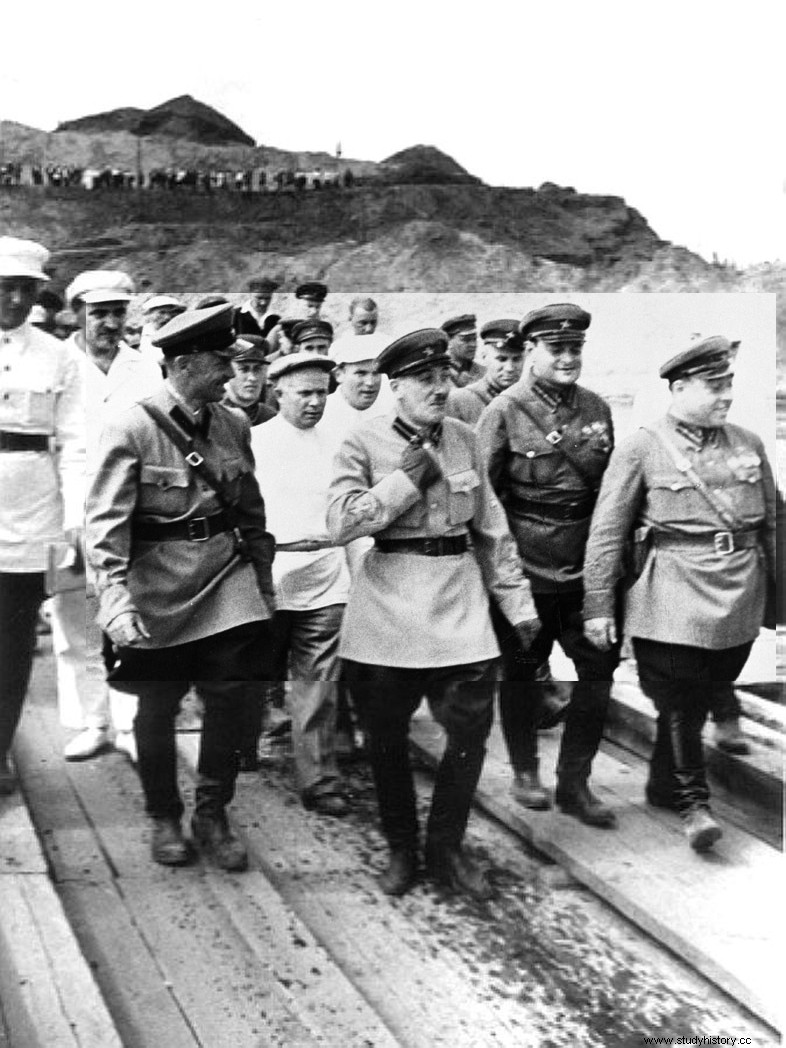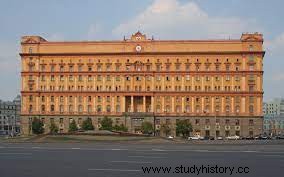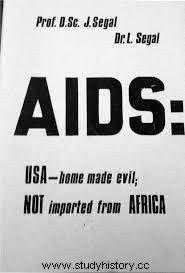The KGB was Russia's intelligence agency and secret police force from 1954 to 1991. But Russia has a long history of covert policing and international intelligence operations. When you think of "sleeping agents", you probably think of Russian spies posing as Americans with a conspiracy to murder a political figure. In fact, much of what you see in movies has not been taken that far, from crushing revolutions to dormant agents around the world. You may know them by the name of the Cold War, the KGB, which translates to the "State Security Commission". But Russia's intelligence agency existed long before the 1950s and still exists today. They are currently known as the FSB or "Federal Security Service", but their methods of assassination, covert operations, and disinformation campaigns date back to before World War I, when Russia was still a monarchy ruled by a tsar.
Okhrana

In the late 1800s and early 1900s, Russia was still a monarchy. Nicholas II was tsar of Russia between 1894 and 1917, a tsar was like a king. The monarchy gradually lost faith in wealthy aristocrats and leaders of the Russian army. People had lost faith in the tsar's ability to rule the country, so communism became a more appealing form of government. To maintain control and suppress the communist movement, Nicholas II established a branch of the military dedicated to eliminating any threat to the government.
This particular branch of the military was called Okhrana. Okhrana is the modern term used instead of a Russian acronym translating to "Institute for the Protection of Public Safety and Order." Their main goal was to find communists and try to prevent a revolution. Okhrana had different methods of finding revolutionaries in Russia. They would search through mail and mark any mention of organization against the government. Agents would act as hospitality workers as doormen or porters and intercept conversations. They would also pose as revolutionaries and workers to infiltrate communist organizations and unions. Okhrana wanted to launch elaborate "stitch" operations by organizing illegal attempts to undermine the status quo so that they could capture revolutionaries in action.
The most extreme example of violence perpetrated by an Okhrana agent is Evno Azev. Asev is credited with more than 28 political assassinations between 1895 and 1909. Okhrana wanted to assassinate leading figures in the communist movement and anyone who intended to overthrow Tsar Nicholas II. Although their methods were extreme and often effective, resources were limited. Okhrana did not have the means to control the whole country, and Russia fell into civil war in 1917.
CHEKA

When the communist revolution began in 1917, Tsar Nicholas II withdrew from power because his army felt they had no ability to stop the uprising. The communist, or Bolshevik, revolution led by Vladimir Lenin, Leon Trotsky and Joseph Stalin took power relatively lightly. But consolidating their power and establishing governance proved to be a more difficult task. The original vision of a communist government did not have a conventional police force, instead the plan was to rely on a force of volunteers who would act as police. The Bolsheviks quickly learned that a formal army and police force were needed to protect the country from its German neighbors and threats against the government from within the country.
Lenin and Trotsky believed that the people would rise up in support of the revolution and the new communist government, but that was not exactly the case. There was limited support from the Russian people and constant threats from wealthy aristocrats who were zealous for communism. Then, just like Nicholas II, the Bolsheviks created a secret police force called CHEKA. CHEKA is an acronym translated into "The All-Russian Extraordinary Commission for Combating Counter-Revolution and Sabotage."
CHEKA was intended to be a temporary solution that would control the population until the support of the communist government increased and the Bolsheviks had more control over the country. But the group quickly became the communist version of Okhrana. CHEKA wanted to search through mail, infiltrate organizations against communism and arrest any 'enemies of the state'. They were primarily aimed at wealthy Russians who were associated with the former monarchy. Their methods of fighting the counter-revolution were the same violent and oppressive methods used by Okhrana. Once again, Russia's secret police lacked the necessary resources to control the entire country, and in 1922 CHEKA was virtually dissolved when Stalin took control of the Communist Party and formed the Soviet Union.
Stalin and GPU

The Soviet Union had half a dozen different versions of a secret police force during Joseph Stalin's reign. GPU or "The State Political Administration" served the same function as CHEKA and Okhrana before them. Their goal was to destroy any opponents of the current administration. They used surveillance, infiltrators and assassination to achieve this goal. But the GPU and its various branches took the techniques of their predecessors to a new level.
Stalin introduced coercive labor camps, known as the 'gulags', increased the level of surveillance of the population, and held public executions of political prisoners. Not only were a few officers pretending to be union members and doormen anymore, this was a massive organization of thousands of officers who were radically determined to imprison or kill anyone who opposed Stalin's reign. There were informants posing in factories, churches, unions, shops, news agencies and anywhere they thought could be 'enemies of the state'. You can find a general timeline for the various agencies that evolved from GPU here:
During WWII, that is when the GPU, also known as the NKGB, had an unknown number of spies in allied countries. It is rumored that Stalin knew more about his allies' military plans than the leaders of these countries, namely the United States, Britain and France. Although there were extensive intelligence-gathering operations during the war, the NKGB / GPU focused mainly on domestic threats for most of its existence. During the various uprisings against Stalin, which began around 1929 and ended in 1953 with Stalin's death, it is said that the GPU and its various iterations were responsible for around 5 million deaths. Although there are so many more things to talk about regarding the GPU and Stalin's secret police, it's time to take a look at the KGB.
The Beginning of the KGB

Like its predecessors, the KGB was primarily concerned with domestic threats to the Soviet Union. However, the KGB focused on covert operations and avoided public arrests and executions. The KGB, or "State Security Commission", operated between 1954 and the end of the Soviet Union in 1991. It became known as the "Sword and Shield" of the Soviet Union and at its peak it had over half a million agents, most of whom operated within Russia's borders. But spies working in other countries were incredibly good at infiltrating organizations and stealing valuable information, such as technological advances that would help the military and the economy. Part of their success was the fact that none of the deep undercover operators knew the identities or whereabouts of other agents.
KGB operators wanted to steal submarine and aviation technology as well as patented technology intended for a commercial market. The KGB was so good at infiltrating organizations that they even had double agents in the Central Intelligence Agency in the United States. The KGB had so many duties and responsibilities. Not only did they infiltrate political opposition in the Soviet Union and have dormant agents all over the world, the KGB also launched massive disinformation campaigns.
KGB disinformation campaigns

Misinformation is deliberately false information that is spread with the intention of creating confusion and often chaos. Countless 'conspiracy theories' are in fact the result of KGB disinformation campaigns. KGB agents would make fake news stories and headlines about things that would cause outrage and arouse attention, such as Operation "Infection."
The KGB spread the idea that the US government created AIDS. They paid researchers to write fake articles about the origin of the disease and spread it to news outlets in Russia, then around the world. They came up with the idea of how wealthy Americans harvest organs from children in other lands and other bizarre and disturbing lies. The goal was to create distrust of the media and the government in general to destabilize the United States and other Western countries. They used the same tactics that Okhrana had used to create confusion and chaos in the revolutionary organizations they infiltrated, but instead of rumors and pamphlets, the KGB made massive headlines by speaking to less than reputable journalists and news outlets.
Jack Barsky, sleeping agent in real life
A former KGB agent talked a lot with the BBC about his time as an American in the 1970s. His name is Jack Barsky, and he explained how the KGB created a false identity for him and set him on the path to infiltrating the highest levels of American society. They used a real birth certificate for a dead child named Jack Barsky. He was sneaked into the country under another name with a fake passport and began his life as Jack Barsky in New York. His goal was to make friends with influence in politics or business. Barsky was taught about the United States and was told how to behave like a real American.
Although in the interview with the BBC he explained that the Soviet Union did not have a good grasp of American culture or customs. When he was in the United States, he worked as a bicycle courier and tried to secure a real American passport with his fake name. The problem was that Barsky was not really a good agent. He was told to hate Americans and capitalism. He was taught that Western society was evil and a threat to his homeland. But when he arrived in New York and tried to rise up in the community, he found that he liked "American Dream".
He lived a double life for years, returning home to debrief and seeing his Russian family once every two years. Eventually, he fell in love with an American woman and had to choose between his duties as a spy and his new love. Needless to say, he chose his new love and betrayed his KGB superiors by telling the world his story. https://www.bbc.com/news/magazine-38846022
He has written an autobiography called "Deep Undercover" if you want to learn more about his life. Barsky is an example of a failed spy in Soviet times. Yet there are examples of agents who successfully infiltrated foreign lands into modern history, most famously Anna Chapman.
From KGB to FSB

After the fall of the Soviet Union in 1991, the KGB was disbanded and replaced by the FSB, "The Federal Security Service", which played the role of spreading disinformation and infiltrating hostile organizations at home and abroad. In 2010, Anna Chapman, born Anna Kushchenko, was one of their sleeping agents captured in the United States.
Chapman used his beautiful appearance to create a whole new meaning for the term 'sleeping pill'. She had a modeling career, became friends with businessmen and used her good looks and popularity to mingle with the political elite in New York. She gathered intelligence for years before anyone realized the possibility that she could be a Russian spy, for who would suspect that a model was a secret agent. We do not know much about the FSB, such as how many active agents they have around the world and what kind of disinformation they can spread. But, based on the history of espionage in Russia, they are probably up to their old tricks.
From the monarchy to the present, Russia is known for its skill in espionage. Assassinations are just the beginning when it comes to Russian intelligence and secret police work. The FSB, the KGB and all the agencies before them have proven their ability to hide infiltrating organizations at home and abroad. For over a hundred years, Russia has mastered the art of going undercover. They also know how to manipulate the media and spread chaos through confusion. It's unlikely that your neighbor is a sleeping agent with plans to disclose top - secret information to the FSB, but that's not impossible.
Featured Image Credit:https://bigthink.com
